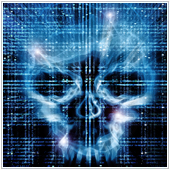Malware and How Can Get Into Your Systems
 The security of your business networks and computers is likely something you have worried about before. Chances are high that you have installed anti-virus scanners and maybe even other security measures, with the goal of eliminating malware infections. While this is a recommended first-line of defense, chances are that malware may still be getting into your systems – the question is how?
The security of your business networks and computers is likely something you have worried about before. Chances are high that you have installed anti-virus scanners and maybe even other security measures, with the goal of eliminating malware infections. While this is a recommended first-line of defense, chances are that malware may still be getting into your systems – the question is how?
There are several ways in which malware can be introduced to your systems, even those protected by anti-virus scanners or other security measures. Here are three you might need to know about:
1. Attacking remote users
Traditionally, business was carried out in a physical office. This means that companies only had to protect internal networks and systems. However, businesses are increasingly going mobile and relying on off-site workers. Problems can arise though when steps are not taken to ensure the security of these endpoints – laptops, tablets, mobile devices, etc.
Attackers know this, and have started to attack remote workers who may not be as secure as the company’s internal systems. This becomes an even bigger issue when the infected device is brought back to the office and connected to the network – thus likely introducing the malware into your systems. It’s necessary to ensure that all remote employees and devices are secure in order to protect your core systems and that they are also following the same security protocols used on-site and in-house..
2. USB infections
The majority of malware is introduced to systems via the Internet and websites. This is the reason why almost all virus-scanners focus on web-based intrusions. To a large extent, these scanners do what they are supposed to and keep companies secure. Hackers are always looking for new ways to attack systems though, and one avenue is through USB drives.
Some of the more popular USB-based malware takes advantage of Auto-Run – when an external hard drive, or USB flash drive is plugged in, this feature automatically opens the drive. The malware on the drive is configured to install itself when the drive boots up and is accessed, thus infecting systems.
To limit the chances of being infected by malware you should either provide drives for your employees to use, or approve drives that come in from outside sources. If you use USB drives to transfer files or share files between computers, try looking into other options like cloud storage drives. Finally, disabling Auto-Run and scanning drives with a virus-scanner, (many programs can actually do this), could go a long way toward deterring infections.
3. Anti-virus misses malware
While many companies have anti-virus scanners and software to deter malware infections, in order for these programs to work they often require daily or weekly updates. These updates contain information about new forms of malware discovered, along with detection and handling rules.
However, many companies may not be allowing the virus scanners to update. Because of this, systems are at an increased risk of being infected by newer malware. Therefore, ensure that your anti-virus scanners are not only up-to-date but are set to scan on regular intervals.
Beyond this, it is important to know that while anti-virus scanners will go a long way in preventing infections, they are often a step behind the newest malware. Taking steps to prevent malware, such as limiting downloads, educating employees and establishing a security policy can also help.
Finally, if you are worried about the security of your systems, working with an IT partner can prove to be one of the most successful ways of minimizing security threats that could harm your organization. IT partners can implement a plan to lower infection rates and employ experts who are able to work with you to restore your systems quickly should they become affected.
If you are looking to make your business more secure, get in touch with us today.







 by
by